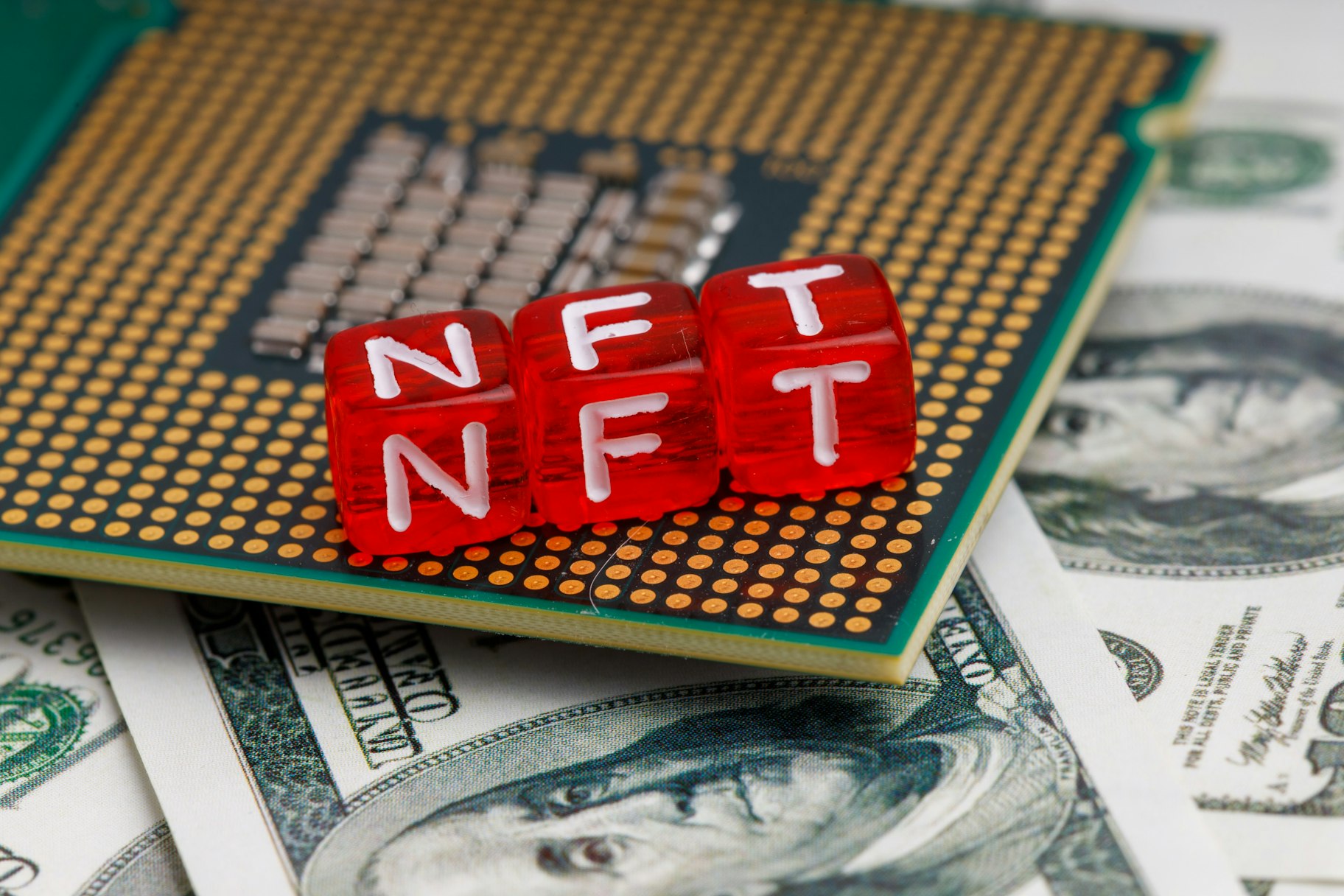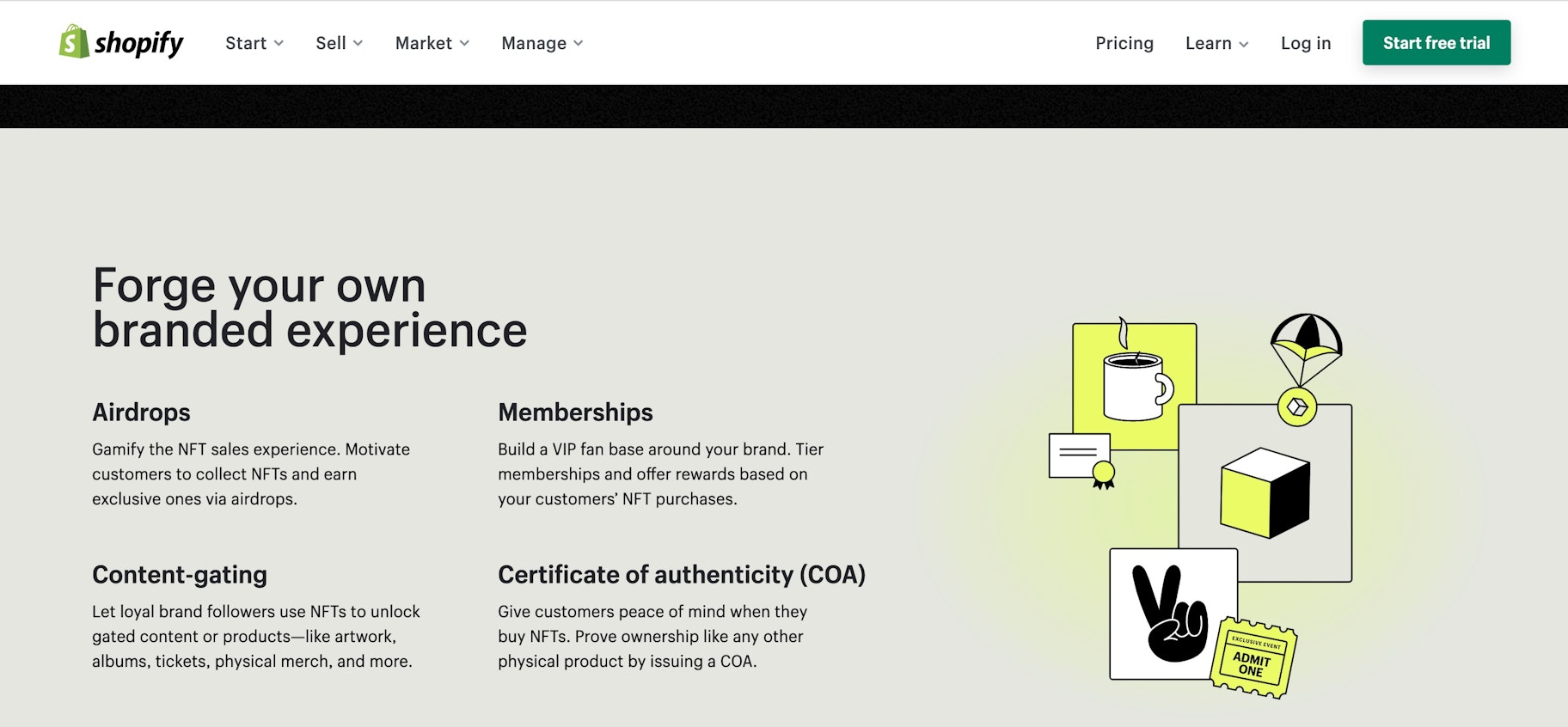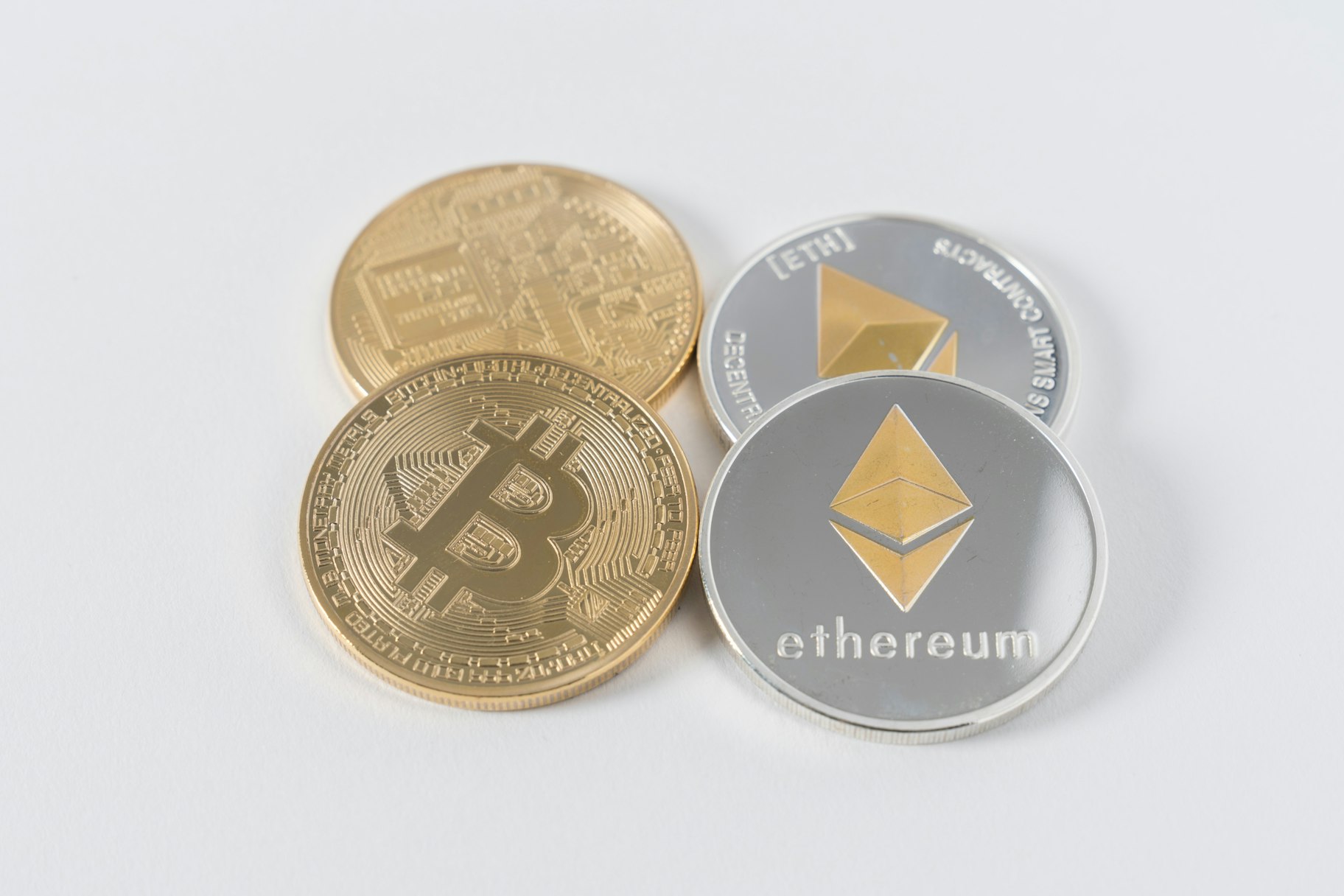You may have seen our previous article on how to make an NFT. Now that you’re familiar with making one, the logical next step is to learn how to sell one.
After all, the crazy stories about selling NFTs are arguably one of the biggest reasons that NFTs have gotten so much attention in recent months. It’s your turn to get in on all the action.
If you’ve been feeling confused or overwhelmed about the process, fret not. That’s just what we’ll cover here.



How to sell an NFT the first time: 5 Steps
1. Choose a platform

Your journey to selling an NFT starts with choosing a platform. There are several options available, including online marketplaces like OpenSea and direct-to-consumer (D2C) platforms such as Shopify. The selection usually depends on the type of NFT you’re selling and the fees involved in trading the cryptographic asset.
→ Click Here to Launch Your Online Business with Shopify
Let’s take a look at some platforms and what they offer to NFT sellers:
NFT Marketplaces
OpenSea
OpenSea is the world’s largest digital marketplace for buying and selling NFTs, including crypto art, game items, and exclusive digital collectibles. It supports two popular NFT standards: ERC-721 and ERC-1155 tokens. Sellers can choose between ethereum and polygon when listing their NFT on the OpenSea marketplace.
The trading fees of OpenSea are 2.5%, which means you’ll get a little less than what you sell your NFT for. For example, if you sell an NFT for $100, you will get $97.50, and OpenSea will keep $2.50.
Rarible
Rarible is another digital marketplace where NFT owners can put their digital assets up for sale. The platform accepts a diverse selection of tokens across different categories, including music, arts, videos, and domain names. To sell NFTs and accept payments on Rarible, you will need a wallet that’s compatible with one of the three blockchains connected to the marketplace: Ethereum, Flow and Tezos.
When it comes to fees, Rarible works similarly to OpenSea, taking 2.5% on both the buyer and seller side from every sale made on the marketplace.
Binance NFT MarketPlace
Binance, one of the world's largest cryptocurrency exchanges, has its own NFT marketplace. Binance's NFT platform lets you sell non-fungible tokens from various different categories, including art, sports, collectibles, entertainment, and gaming. Two blockchains are supported: Ethereum and Binance Smart Chain (BSC).
Binance charges a flat 1% trading fee for all NFT creators and sellers, which is the lowest in the market. In addition, sellers pay a 1% royalty fee if the NFT they own was created by someone else.
Selling NFTs on Shopify
Popular ecommerce platform Shopify began to accommodate NFT sellers in July of 2021. Shopify’s infrastructure allows creators and resellers to offer a D2C experience through their own branded storefront. Instead of using a marketplace, each NFT merchant can sell their digital assets directly to the customer.

This offers other benefits as well. For example, NFT sellers can accept debit cards, credit cards, and mobile payments through their storefront. Shopify also has its own payment gateway called Shopify Payments—merchants don’t pay a transaction fee on payments processed via this gateway. You can also add alternative payment methods such as cryptocurrencies to your Shopify NFT store.
Shopify supports popular blockchains like Ethereum, Flow, Near, and Polygon for listing and selling NFTs.
2. Make a crypto wallet
To list your NFT for sale, you need to have a cryptocurrency wallet. The most popular wallets that support NFT sales are MetaMask, Trust Wallet, and Coinbase Wallet. Below is a quick overview of each:
MetaMask
MetaMask allows you to connect to the Ethereum blockchain to buy, sell, or trade your NFTs.
Trust Wallet
Trust Wallet is a great option if you are looking for a mobile wallet. It supports the buying and selling of NFTs and allows you to store your tokens in a secure wallet.
Coinbase Wallet
Coinbase Wallet lets users send and receive NFTs with usernames instead of using public blockchain addresses. This helps create an experience that is similar to the digital wallets people already recognize and use (e.g., PayPal).
3. Price your NFT

There’s a popular saying that NFTs are worth what people are willing to pay for them, but the truth is that certain factors influence their pricing and how buyers typically value them. These include:
- 30-day average price. This is the historical price trend of an NFT in any category. Ideally, your target price should be close to the average value of similar tokens over the past 30 days.
- Rarity. Some non-fungible tokens have unique traits that will drive up their prices. An example, the popular Bored Ape Yacht Club NFT collection has less than 1% apes with the “laser eyes” trait. If your NFT has a very rare trait, go ahead and price it above the historical average. (People will still buy.)
- Utility. Can your NFT be traded for a virtual item in a certain metaverse or game? Do buyers get to be a part of an exclusive club that receives extra perks such as discounts on future purchases? The utility of the underlying asset will determine whether you can demand a higher price for your NFT.
- Creator rapport. Individuals who’ve built a reputation and following in the NFT space can command a higher price for their assets. But when you’re a new seller with no sales history, it’s best to start closer to the historical average and move your way up.
4. Create a listing
Once you set a price for your NFT, you’ll need to create a listing.
Log into your NFT platform and click Create on the top right (if you’re using a marketplace). Then, choose from either a single or multiple collectibles, based on the supply of your asset. You’ll then need to enter a title and description for your NFT.
Write a title that’s appealing and related to your digital asset but doesn’t make a hard sell. In the description, talk about the purpose of your token and any theme behind it. You’ll also want to mention the rarity tier of your NFT and whether buyers will get any perk beyond the ownership of the asset (a hint is usually enough to attract potential customers' attention).
Next, choose the type of listing you want to create. On marketplaces like OpenSea, you get two options for listings:
On Sale
If you want to sell your NFT for a fixed price, go with this option. To create an on sale listing, simply enter the price for your NFT and choose the length of time you want the listing to be active.
Auction
In this type of listing, you set a minimum price (also known as the reserve price) for your NFT. Then an auction takes place, where the highest bidder gets to purchase your digital asset.
5. Accept an offer

After listing your NFT, keep an eye out for offers from potential buyers. While most platforms will notify you when someone places a bid on your listing, it’s good to check in yourself regularly to ensure you don’t miss any requests.
If you’ve chosen a fixed price and someone decides to buy your NFT for that amount, it’ll be considered a public sale. In this case, you’ll get an alert that your digital asset has been sold and your account has been credited with fiat or cryptocurrency.
But if it’s an auction, you’ll get notifications about the different bids being placed on your NFT. Additionally, buyers may send you private offers where they propose a certain figure for buying your non-fungible token. Some caution is needed, as offers could sometimes be lower than your minimum price (such offers are usually sent by bots or adversaries attempting to capitalize on the owner’s oversight).
Selling an NFT is simpler than it might seem
At first glance, it might seem incredibly complicated to sell an NFT. While there are a lot of things to keep in mind, the process itself isn’t so bad once you do your research and due diligence.
Just make sure you look into your options in terms of platforms, auction settings, and payment-related issues like fees and gateways.
Once you’ve got the bases covered, you’re well on your way to selling some glorious NFTs.
How to sell an NFT FAQ
How much do NFTs sell for?
The average price of an NFT can vary anywhere from $100 to $1,400, depending on its scarcity, utility, and popularity. Additionally, fluctuations in the value of the underlying cryptocurrency may impact a non-fungible token’s price. (An increase in the price of ethereum may cause the price of ethereum-based NFTs to rise, for instance).
Do I need to pay to sell an NFT?
It depends on the platform you choose. With NFT marketplaces, you can list your digital asset for sale without paying anything, though they do charge a 2% to 2.5% fee on every transaction made through their website. If you’d rather avoid transaction fees, Shopify offers a way to sell NFTs and pay no fees with Shopify Payments, which is the company’s own payment gateway.
Can I sell an NFT for cash?
You can sell your NFTs for money or cryptocurrency, depending on your preference. But keep in mind that the token’s transfer will be recorded in the blockchain to reflect a change in asset ownership.






